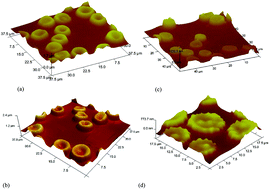Relating the blood-thinning effect of pentoxifylline to the reduction in the elastic modulus of human red blood cells: an in vivo study
Abstract
The blood thinning properties of pentoxifylline have been attributed to its ability to increase the deformability of red blood cells and improve their rheological properties. To interpret and substantiate these observations a novel approach is taken by measuring the stiffness of individual red blood cells from healthy humans before and after subscription to pentoxifylline for nine days. Atomic force microscopy nanoindentation experiments reveal that the elastic modulus of the red blood cells decreased by 30%–40%, after pentoxifylline subscription. This decrease in elastic modulus is related to the ability of pentoxifylline to increase the production of ATP and lower Ca2+ concentrations in red blood cells. The present in vivo experiments provide a deeper understanding of the mode of action of pentoxifylline, and pave the way to using indentation in medicine. A further unique advantage of this study is that it was performed on healthy volunteers, rather than requiring in vitro incubation.



 Please wait while we load your content...
Please wait while we load your content...